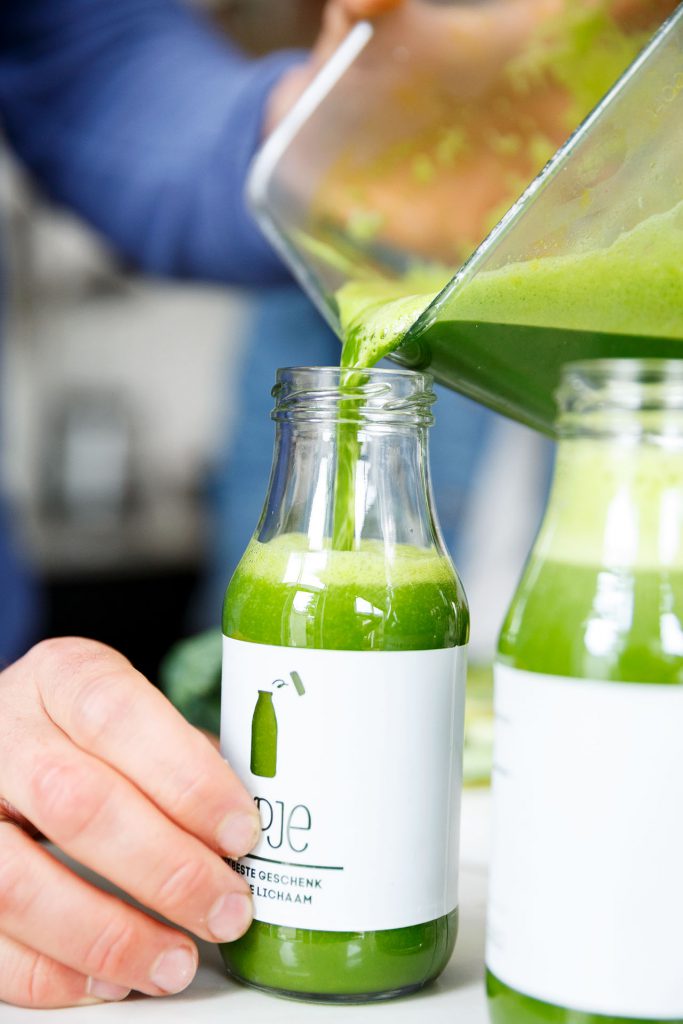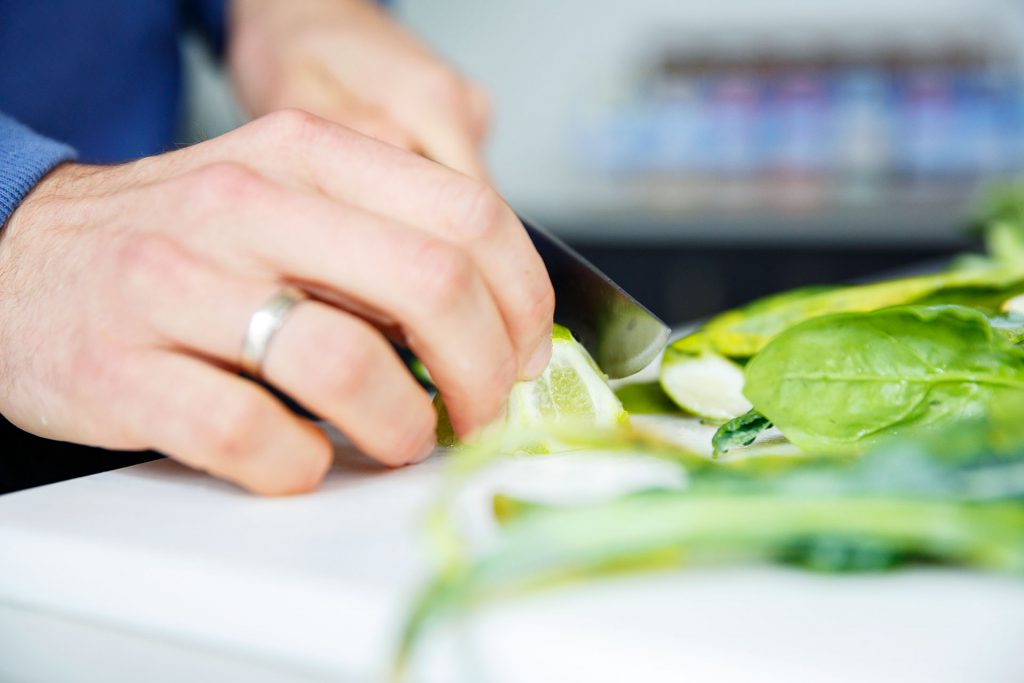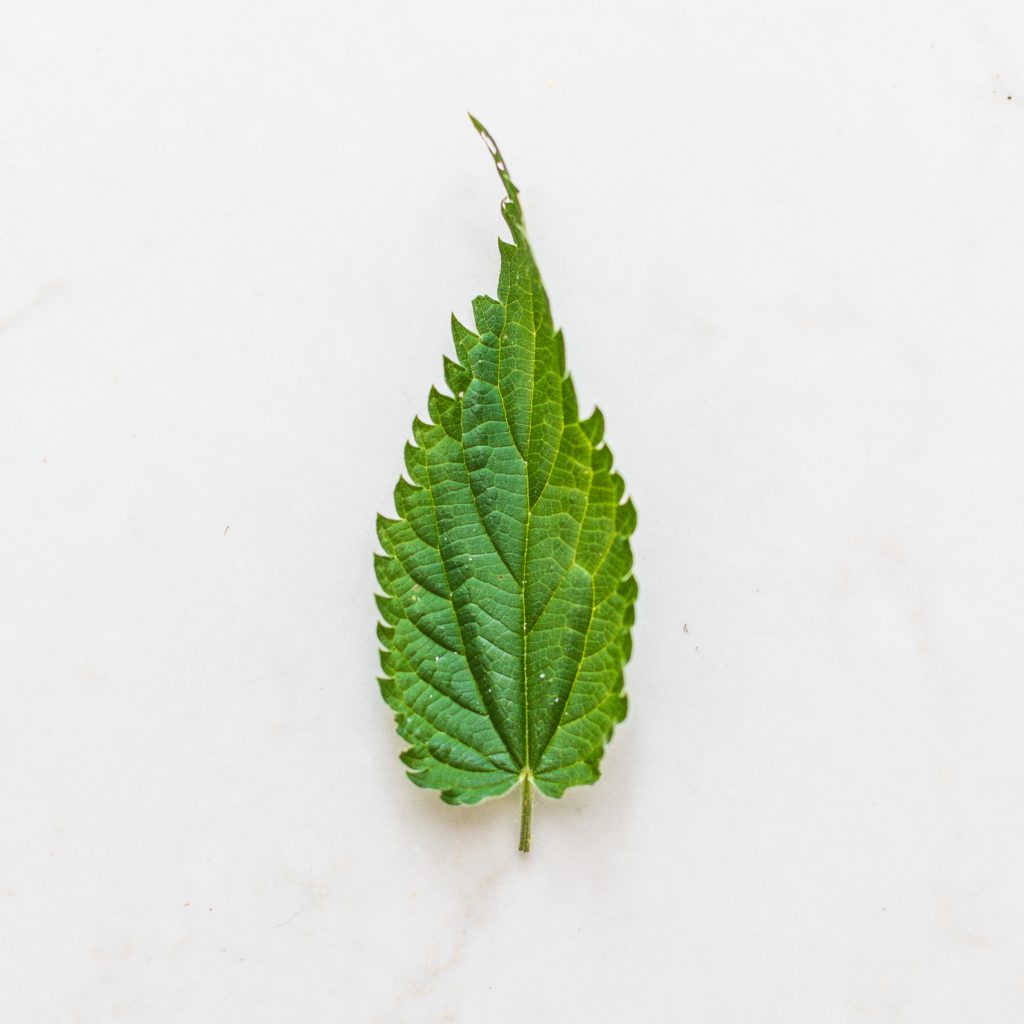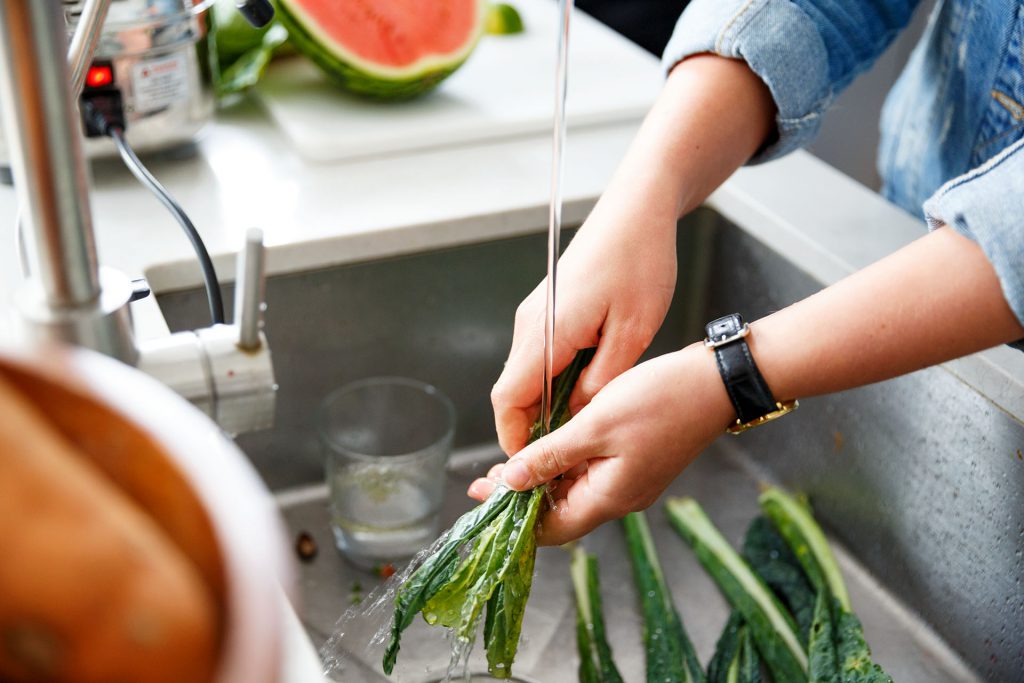If you are just starting to drink juice, the pure taste of fruit and vegetables will amaze you. Freshly squeezed apple juice from the Slowjuicer tastes completely different from ‘fresh’ (pasteurised) apple juice from the shop. You will have to get used to the bitter flavours of some the vegetables, but fortunately, your taste buds have fantastic adaptability, to such an extent that you will be able to increase the vegetable percentage more and more until eventually, you will only want to drink pure vegetable juice!

TASTE AND COLOUR
If you only juice fruit, you almost always get a fantastically sweet taste. However, the trick is to create a nice taste balance with as little fruit as possible, because fruit contains a lot of fruit sugar and that can lead to high insulin peaks. If you eat fruit, the sugars have little impact because of the fibre, but if you squeeze the juice you take out the fibre. We believe that with a ratio of at least 70% vegetables and about 30% fruit you keep it healthy. Don’t forget the herbs and spices, because they provide a delicious taste. Even the skin of a lime, lemon or orange gives a taste that makes your mouth water, so experiment!

But how do you know if you’ve made vegetable juice as a result of all your enthusiastic juicing? In general, a juice with a nice colour and a nice aroma will taste good. When you start making juices, you can aim to make juices in the craziest colours but usually, a brown juice will be the result, and that doesn’t look very appetising… Making a juice in a certain colour is just like mixing colours with paints: the more often you practice, the nicer the taste, the smell and the colour.
HEALTHY COMBINATIONS
One juice is not like another. Different combinations of ingredients have a completely different effect on your body. If you learn more about the properties of certain vegetables, fruits, herbs, spices and wild plants, you can compose juices for specific conditions. Some fruit and vegetables go better together and reinforce each other in terms of nutritional value and nutrients. For example, you can create juices to get more energy, to rid your body of toxins or to get rid of headaches. We drink one to two 300 millilitre portions of juice a day and always make different combinations, depending on how we feel and what is in season or growing in our vegetable garden.

BUYING TIPS
- Preferably buy the ingredients as fresh as possible.
- Buy organic fruit and vegetables. If that’s difficult: there are also websites with lists where you can find out which types of fruit and vegetables have been least sprayed with pesticides.
- Try to buy products in season.
- Buy as many local products as possible. Check the labels for the country of origin.
- If you have experience, you can pick ingredients from nature. For example, consider nettles, dandelions and berries.

COMBINING TIPS
- Try to use as many vegetables and tubers as possible.
- Fruit gives a soft, sweeter flavour, but do not use too much in your juice as you will consume a lot of fruit sugars.
- Use herbs, spices, garlic, superfood powders, sprouts and seaweed in moderation in your juice, as the flavours are often very dominant.
- Do not throw away the edible peel of vegetables and fruit, incorporate it into the juice. The skin generally has the most nutritional value and the strongest flavour.
- Combine ingredients that are similar in colour. Many green ingredients often make beautiful green juice. If you mix green and red, a brown colour comes out. If you mix white colours with orange, it becomes a nice light orange colour.
- Try to make juices with different colours: experiment with yellow, red, orange, purple, green, blue and white ingredients so that you consume the whole colour spectrum of nature. Because each colour has its own unique health properties.
- The brighter the colour of an ingredient, the more antioxidants and healthy properties it has. Broccoli should be bright green. If it turns brown or yellowish, it is already quite old and contains less nutritional value.
- Vary the ingredients so that you get an optimal variety of nutrients.
JUICING TIPS
- Wash fruit and vegetables thoroughly to rinse off any remaining sand grains and insects. (Insects might give your juice extra healthy proteins!)
- We recommend a juicer that squeezes your juice slowly (Slowjuice) so that all nutrients and enzymes end up in your juice.
- Squeeze the ingredients raw. Raw fruit and vegetables contain much more vitality, energy, vitamins, minerals and enzymes.
- Drink the juice as a snack, as a meal replacement or with your meal. Listen to your body and drink a juice when you feel the need.

NOT SUITABLE FOR MAKING JUICE
- Aubergines, raw beans, seeds and cereals.
- Raw white potatoes are poisonous. Purple, orange and sweet potatoes are non-toxic and can be juiced.
- Non-toxic mushrooms can be made into juice in small quantities as in large quantities, they can be slightly toxic.
- Consult a wild berry-picking expert before juicing wild berries and mushrooms. It is of course not the intention that you juice a poisonous variety…
- Soft, starchy fruits such as banana, avocado, guava, mango and apricot hardly produce any juice, and this can cause the Slowjuicer to get stuck. They are more suitable for smoothies or to eat as they are.

